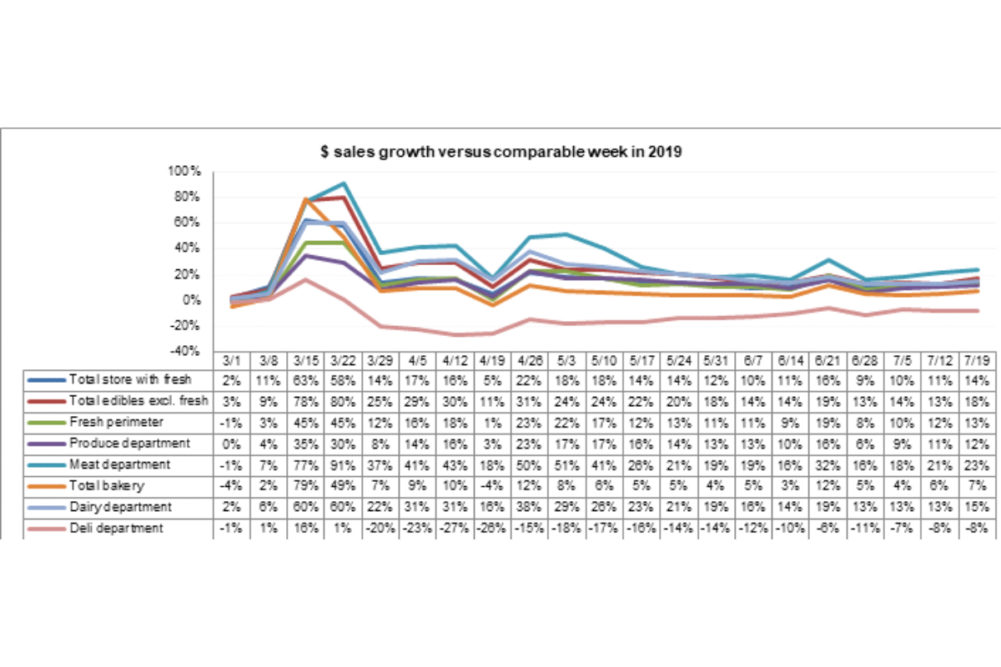SAN ANTONIO – Perimeter sales are holding strong in the second half of July with a 13% increase the week ending on July 19 compared to the same timeframe in 2019, shows the latest data from 210 Analytics and IRI.
“The virus’ impact on the nation’s food spending is becoming ever so clear as the weeks roll by,” said Jeremy Johnson, vice president of education for the International Dairy Deli Bakery Association (IDDBA). “As cases are rising once more, we can start to draw upon the early lessons of the pandemic, including the potential reduction in store trips, the propensity for items with longer shelf life and items catering to smaller gatherings and celebrations.”
The deli department saw a continuation of mixed performance, coming in at 8% below the same timeframe in 2019. Deli cheese sales were up 10.9%, deli meat sales were up 9.5%, and deli prepared was down 20.4%.
“The closing of self-serve areas where consumers can mix and match across offerings has hurt sales in that regard,” said Eric Richard, industry relations coordinator for IDDBA. “But retailers have become extremely good at developing items that are ready-to-eat, ready-to-heat and ready-to-cook based on pre-pandemic deli prepared favorites. And this is the key to bringing deli-prepared back to positive growth territory. Consumers need a helping hand in meal planning and meal preparation and deli items can be the solution they crave.”
The meat category came in at 23.4% above 2019 sales. Dollar wise, lamb (up 40.5%), beef (30.4%) and turkey (up 18.8%) were the top performing meats. Chicken was up 14.2% and pork was up 17.1%. Volume sales were up 10.3%, with lamb (up 31.5%), turkey (up 16.1%) and beef (up 14.1%) seeing the highest sales volume increases.
“It is becoming increasingly evident that the virus controls much of how market forces will develop in the coming weeks and months,” said Joe Watson, vice president of membership and engagement for the Produce Marketing Association (PMA). “The rise in COVID-19 cases is prompting renewed spending at retail, with everyday demand generating double- digit increases over year ago. But the devastating part is that this is at the detriment of foodservice produce sales. Everyone in the produce supply chain benefits from balanced retail and foodservice demand and this second hit is devastating.”


